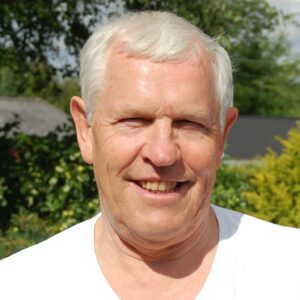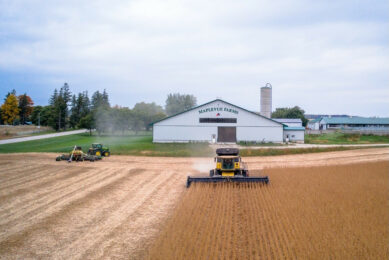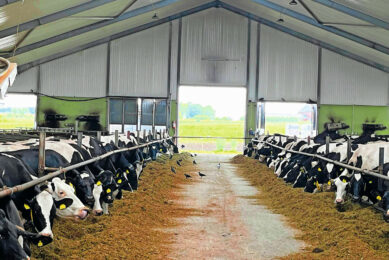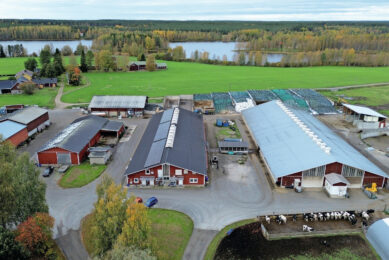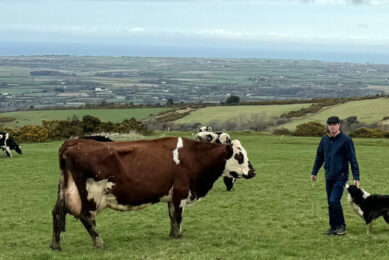Producing as an organic milk producer in Denmark
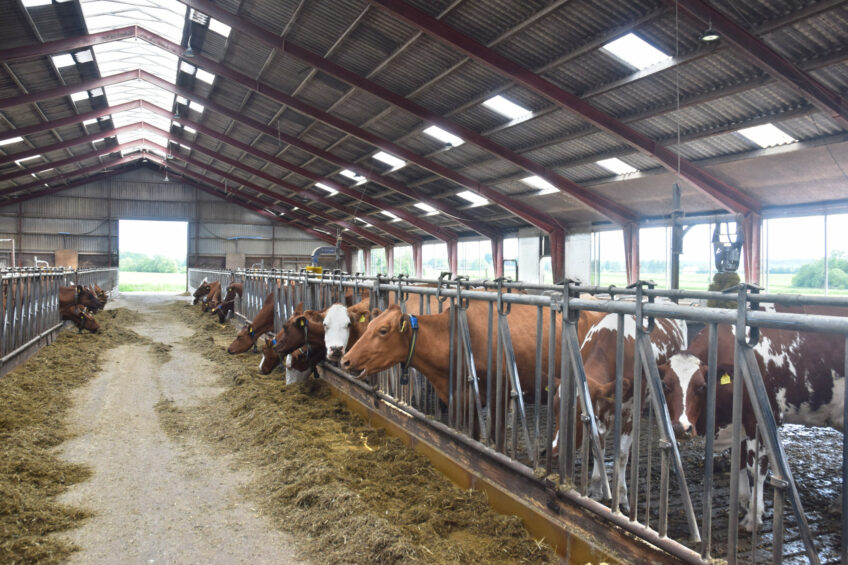
Rising feed prices and other costs as well as a too low milk price are putting pressure on organic milk producers. We hone in on one organic farm to hear about its production and herd.
In recent years, the number of organic milk producers in Denmark has fallen by approximately 10%. This is partly due to higher costs for feed and partly to a low price per kg of milk, says Peter Sivertsen. He runs the fourth-generation family dairy farm Mannerup Møllegaard near Roskilde with his wife Lotte and 3 employees.
In 1998, Sivertsen decided to completely switch and made the transition to an organic milk producer, starting with 70 cows. Today, the herd consists of 150 dairy cows and approximately 150 calves of the Red Danish Dairy Breed. Over the years, Sivertsen has also been involved in professional work within Arla Foods, where he is on the company’s board of representatives.
Sivertsen fears a CO2 tax in agriculture. Negotiations are currently ongoing between the government,
agricultural organisations and several NGOs about a tax. If the Danish parliament imposes a tax, Denmark will be the only country in Europe with such a tax. Sivertsen feels that is not fair and is afraid of what regulations the government will put in place regarding nitrogen emissions from agricultural fields into lakes, streams and fjords.
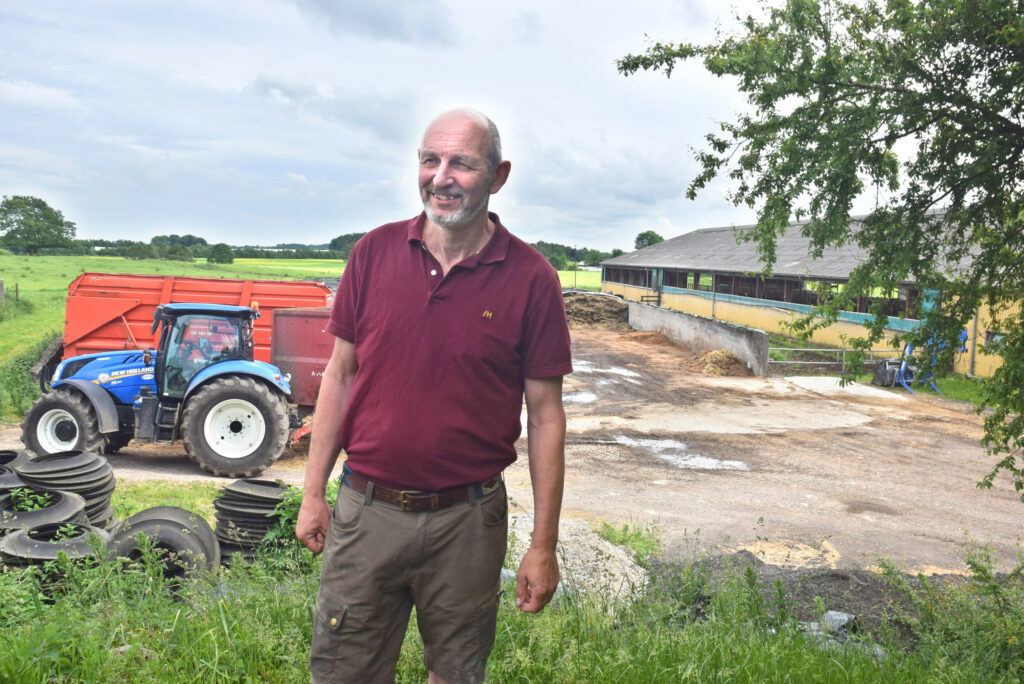
Feed self-sufficiency
He farms around 300 ha of land, half of which is owned. Half of the cultivated area is laid out for grass, while there is a 3-year rotation of rye, wheat, rapeseed and barley on approximately 100 ha, and approximately 50 ha are laid out as permanent grass and wetlands. This means that Møllegården is almost self-sufficient in feed with the remaining 8-9% purchased as soybeans. The grasslands are part of the three-year rotation. “When we are self-sufficient in feed, it means less climate impact as we do not have to transport the feed to and from the farm,” says Sivertsen.
Roughage
The grass is usually cut 4 times a year and then ensiled in flat silos, which are covered with plastic until fermentation is complete after 5-6 weeks, after which the silage is ready to use. The grass varieties are mainly ryegrass and red clover.
“Our figures show that in recent years we get better quality clover grass after we have cultivated rapeseed in a field. When growing rapeseed in a field after grass, we usually harvest approximately 4 tonnes of rapeseed per hectare and I think that is a fine result,” says Sivertsen. “Over the years, we have also found that rye is best for keeping a field free of weeds, as the plants cover the entire soil quite early during growth. On the other hand, we know it’s more difficult to keep a wheat field free of weeds – the wheat plants do not cover the soil as quickly as rye. Therefore, we have reduced our area with wheat. At the same time, our studies show that the cows can eat rye in the fodder very well.”
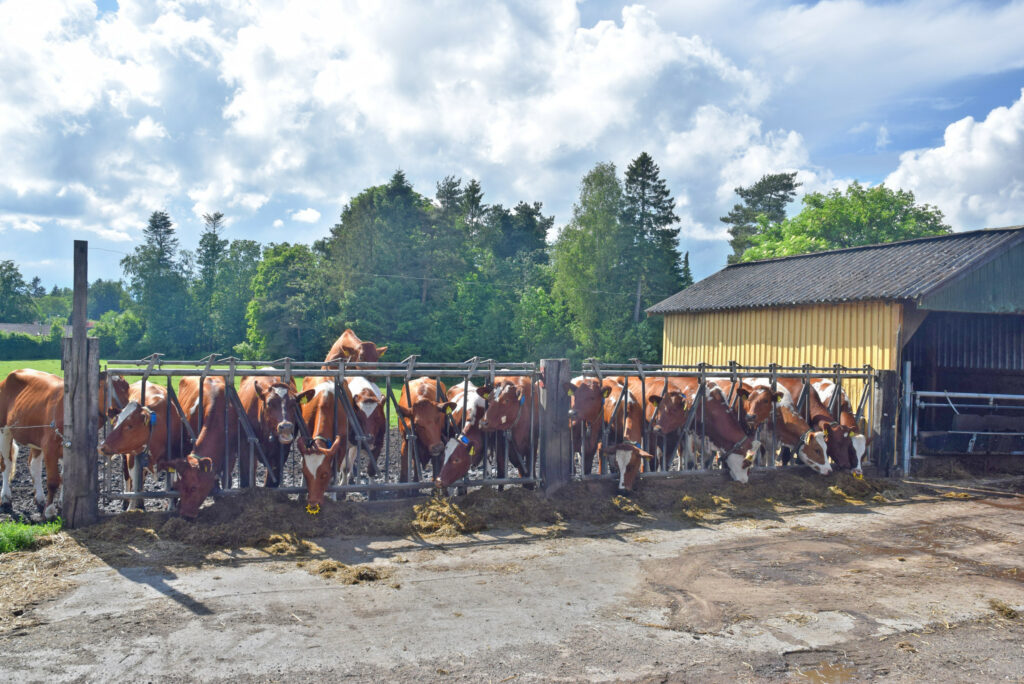
“Grass silage plus fresh grass from grazing make up approximately 65% of the roughage, while 25% is grain and the remaining 10% is supplementary feed – mainly soya. We mix our feed ourselves at our mixing plant and feed once a day in the morning,” adds Sivertsen.
Free-running stables
The cows are kept in free-running barns with bunks for each cow in a bedding consisting of agricultural lime and chopped straw. “During the summer months, the cows are out on the grass fields for a minimum of 6 hours, and they go in and out of the free-running barn themselves, although the link from the field to the barn is closed until 2 pm,” he says.
He adds: “From late afternoon and for most of the night, the cows enter either of the 2 milking boxes with 2 automatic milking robots by themselves. It takes approximately 6 minutes to milk each cow and on average the cows are milked approximately two and a half times a day. Currently, the cows give an average of 33 kg milk per cow per day. The milk’s fat percentage is approximately 4.5% and protein content of approximately 3.6%. The cell count is around 300,000.”
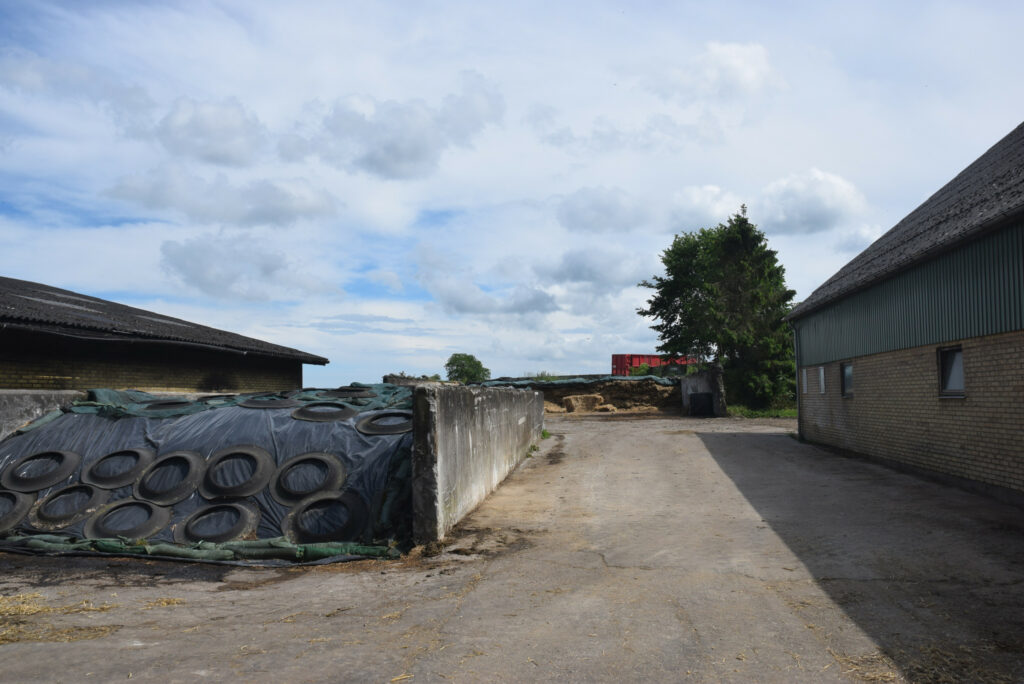
Milk processing and breeding
Regarding breeding, Sivertsen works with the cattle breeding association Viking Denmark. The company collaborates with Finland and Sweden regarding breeding work, as in Denmark, the potential for good genes is limited with only about 30,000 cows of the Red Danish Dairy Breed. To avoid inbreeding, the 3 countries have teamed up for the breeding programme, so the selection of good genes is considerably greater.
“We select the cows that have the highest performance and the best health and then we use what is called sex-sorted bull semen. We also breed to get not only the highest performing cows, but also robust and therefore healthy cows. We usually put a cow out after three calvings, although we also have some very high-performing cows that have had 5 or 6 calvings,” concludes Sivertsen.


